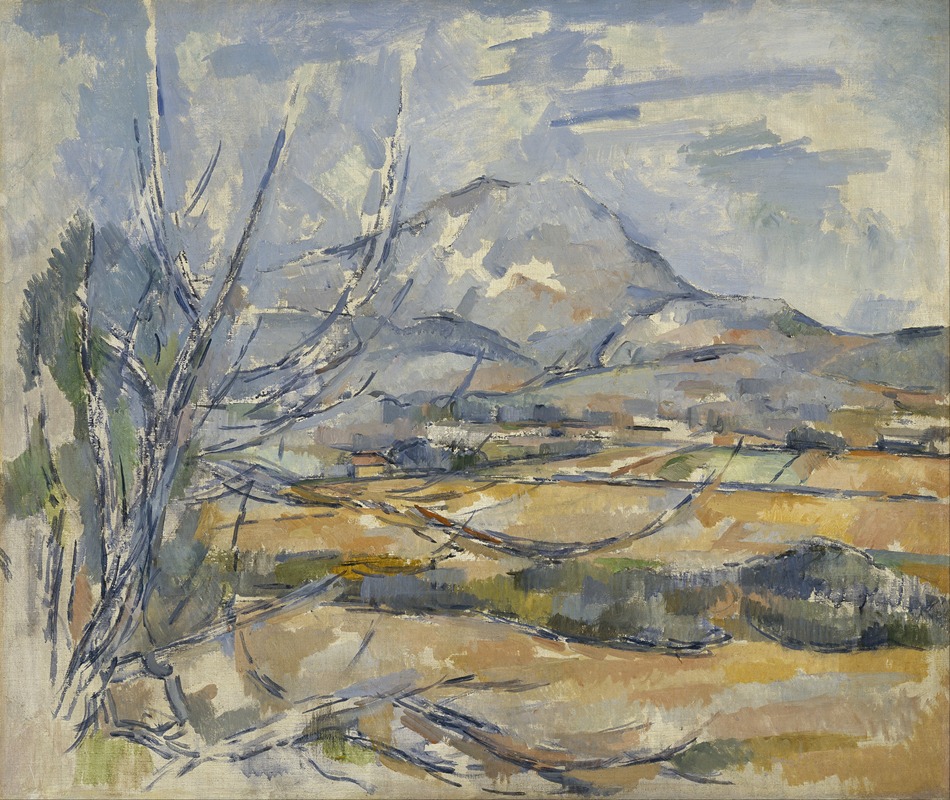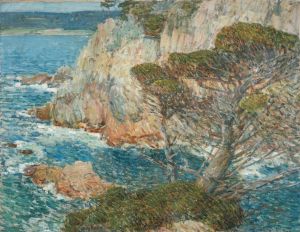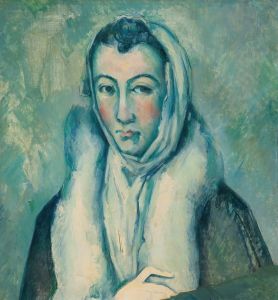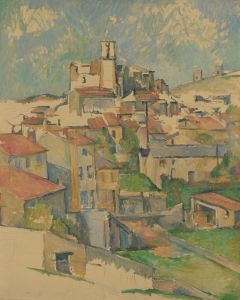
Montagne Sainte-Victoire
A hand-painted replica of Paul Cézanne’s masterpiece Montagne Sainte-Victoire, meticulously crafted by professional artists to capture the true essence of the original. Each piece is created with museum-quality canvas and rare mineral pigments, carefully painted by experienced artists with delicate brushstrokes and rich, layered colors to perfectly recreate the texture of the original artwork. Unlike machine-printed reproductions, this hand-painted version brings the painting to life, infused with the artist’s emotions and skill in every stroke. Whether for personal collection or home decoration, it instantly elevates the artistic atmosphere of any space.
Paul Cézanne's "Montagne Sainte-Victoire" is a series of oil paintings and watercolors created between the late 19th and early 20th centuries. These works are among Cézanne's most celebrated contributions to the Post-Impressionist movement and are considered pivotal in the transition from 19th-century artistic concepts to the radical approaches of the 20th century.
Cézanne was born in Aix-en-Provence, a region in southern France, and the Montagne Sainte-Victoire, a limestone mountain ridge, was a prominent feature of the landscape near his hometown. This mountain became a recurring subject in his work, reflecting his deep connection to the region and his innovative approach to capturing the essence of nature.
The Montagne Sainte-Victoire series is notable for its exploration of form, color, and perspective. Cézanne's approach was revolutionary for its time, as he sought to depict the mountain not just as a geographical feature but as a complex interplay of shapes and colors. He often painted the mountain from different angles and under various lighting conditions, which allowed him to experiment with the effects of light and atmosphere on the landscape.
Cézanne's technique involved the use of small, repetitive brushstrokes that built up to create a sense of structure and depth. This method allowed him to convey the solidity and permanence of the mountain while also capturing the transient effects of light and shadow. His palette was characterized by a range of muted earth tones, punctuated by brighter hues that added vibrancy and contrast to the compositions.
The Montagne Sainte-Victoire series is also significant for its departure from traditional linear perspective. Cézanne often flattened the spatial planes, creating a sense of ambiguity and tension between the foreground and background. This approach challenged conventional notions of depth and perspective, paving the way for the development of Cubism and other modernist movements.
Cézanne's fascination with Montagne Sainte-Victoire was not merely an artistic endeavor but also a philosophical one. He sought to capture the underlying structure of the natural world, believing that art should reveal the fundamental order and harmony of nature. His work on this series reflects his belief that painting should go beyond mere representation to express the artist's perception and understanding of the world.
The Montagne Sainte-Victoire paintings are housed in various museums and private collections around the world, including the Musée d'Orsay in Paris, the Metropolitan Museum of Art in New York, and the Hermitage Museum in St. Petersburg. Each painting offers a unique perspective on the mountain, showcasing Cézanne's evolving style and his relentless pursuit of capturing the essence of his beloved Provençal landscape.
Cézanne's Montagne Sainte-Victoire series remains a testament to his innovative spirit and his profound influence on the course of modern art. His ability to transform a familiar landscape into a complex study of form and color continues to inspire artists and art enthusiasts alike, underscoring his legacy as a pioneer of modernism.

















